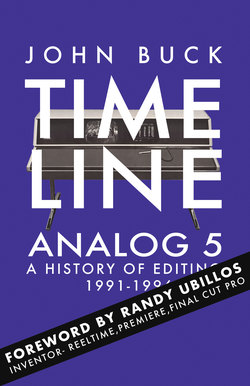Читать книгу Timeline Analog 5 - John Buck - Страница 12
На сайте Литреса книга снята с продажи.
REELTIME
ОглавлениеSuperMac had generated consumer interest at the 1991 Boston MacWorld Expo in DiskFit and ReelTime but it was not positioned to sell software-only products. It decided to sell off the two applications. DiskFit was traded back to the original developer Dantz and ReelTime was ‘shopped around’ to prospective buyers. Steve Blank told the press:
There's a feeding frenzy of companies trying to buy it, but no matter what, we will bundle ReelTime with Video Spigot for the first 90 days.
A short-lived bidding war between Microsoft, Aldus and Adobe Systems ended when the company that had defined, and dominated print publishing on the desktop agreed to buy ReelTime.
Blank told the press that selling ReelTime was like:
...trading away a first-round draft choice.
Having co-ordinated video development between Adobe and Digital F/X during the development of TitleMan and Hitchcock, Tim Myers was well suited to be Product Manager for ReelTime.
I knew enough about editing from my University days and then with our work alongside Digital F/X, not a lot but probably more than most others at Adobe!
He told the press at the time:
Adobe plans to bring the product ‘in line’ with its professional products.
Denise Caruso wrote in her ‘Digital Media’ newsletter:
Adobe plans to add minor enhancements to ReelTime before the initial release. It will be working closely with SuperMac to create versions 1.0 and 1.1. Sources say that the specifications for 2.0 will also be worked out between the two companies. But Adobe will be calling the shots.
First, the product's name will be changed, although the new name is still being cleared through copyright lawyers. Then programmers will write software connections, or "hooks," to Photoshop, Adobe's image manipulation software.
The acquisition was significant for Adobe because it had never released a video product.
For SuperMac, the deal officially signaled its exit from the software market.
Robert Gruttner adds perspective:
I don’t think SuperMac imagined they were losing what would become Premiere, KeyGrip, and Final Cut Pro. It was all about making monitors and video cards back then. Hardware, not software, was the money machine for SuperMac.
Tim Myers concludes:
Obviously, SuperMac had decided to focus on hardware and couldn’t justify further development and support of Randy’s application. Adobe started to get serious about the acquisition. They had experimented a little with video, mainly with PICT image applications and so forth but nothing at this level.
I think it was a combination of feeling that there was a chance that desktop video may take off but they were probably just being opportunistic. ReelTime was a low-risk, low-cost chance to get into video and if it turned into something, great. If it didn’t, not too much would be lost because Adobe was very much a print-focused company.
